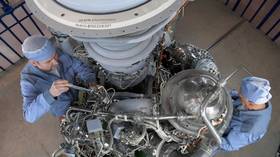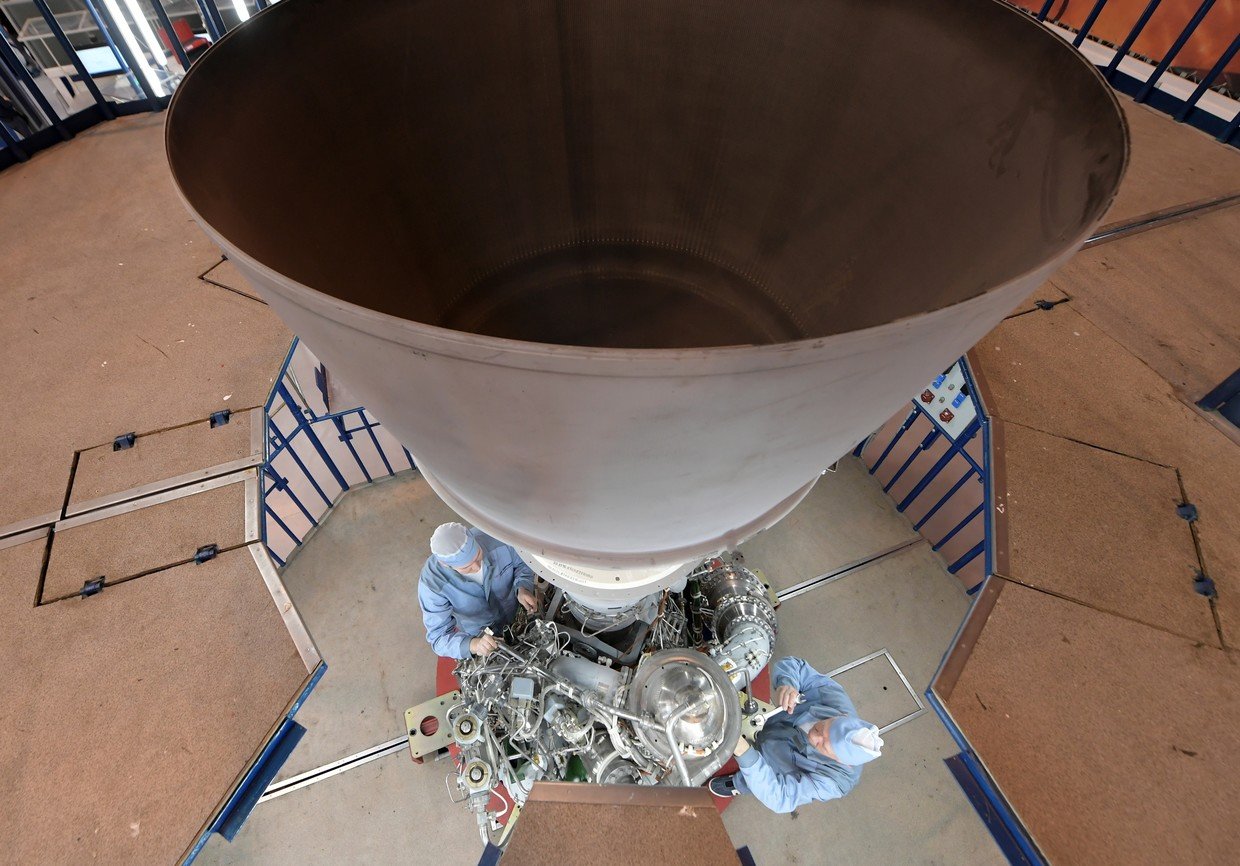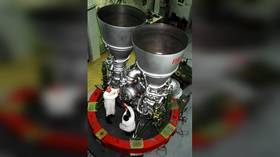Strings attached: Why US can’t stop using ‘toxic’ Russian RD-180 rocket engines

The US has recently got another shipment of RD-180s, even as politicians in Washington continue to demand a halt to space cooperation with Moscow. Why have their efforts, so far, amounted to nothing?
Officially, Washington is tireless in its pursuit to “save” its European allies from Russian fossil fuels by giving them US “molecules of freedom.” Yet, when it comes to sending stuff into space, the US itself continues to be dependent on the Big Bad ‘Russkies.’
Three new Russian RD-180s were sent to the US last week by NPO Energomash, to be used in Atlas 3 and Atlas 5 rockets. The deal is part of the Russian manufacturer’s contract with the United Launch Alliance (ULA) – a company jointly owned by US aerospace giants Boeing and Lockheed Martin, and which has, so far, been the major contractor of the US Air Force and NASA in the field of space launches.

Since the long-term contract between Energomash and ULA was signed back in the 1990s, the Russian engines have been used in more than 80 US space launches and were used in rockets that carried American spy and military satellites into orbit as well as facilitated NASA’s missions to Mars, Pluto and Jupiter.
So, how did RD-180s become an indispensable part of the US space program that many in Washington are now so eager to get rid of?
Risks & benefits
Back in the late 1980s, while US scientists considered the oxygen-rich staged combustion engine too complicated and unreliable, the Soviets ended up creating an operational model of it.
Unlike the gas-generator engines used in the US Space Shuttle program and the Apollo Moon landings, the Soviet ones did not let the exhaust from the rocket fuel go to waste. Instead, the exhaust from the so-called pre-burners (used to send fuel and oxygen into the main combustion chamber under high pressure to burn them there and generate thrust) was re-injected into the main combustion chamber, giving the engine more power.

The Soviet RD-170 and its successor RD-180, developed in Russia, are both oxygen-rich. Just years before the collapse of the USSR, when Washington saw that the Soviet scientists did manage to create a functioning engine, it decided to simply buy them from the Russians.
The idea behind this deal was that “down the road, the US would manufacture the same Russian engine” domestically after getting acquainted with its technology, as former Senator Bill Nelson (D-Florida) put it. The US indeed bought the key technologies as part of the deal but developing a new rocket engine “takes too much time and is too expensive,” a senior fellow at the Space Research Institute of the Russian Academy of Sciences, Natan Aysmont, told RT.
There were attempts to use [Russian] blueprints that were provided [to the US] but they failed. Eventually, it turned out to be more difficult than they expected.
Development of such a sophisticated mechanism requires a great deal of experience as well as “intuition,” military expert Mikhail Khodarenok explains. “One cannot just copy an engine – either a rocket one or an aircraft one – even if one has it in possession. To create something similar [to RD-180], one would need at least 10 years and a billion dollars.”
“That intention was never carried out and that leads us to where we are today,” Nelson admitted back in 2016.
Also on rt.com Russia shows off upgraded world’s most powerful rocket engine meant for Soyuz-5The US has continued to buy complete RD-180s. The Russian tech has since gained recognition in America for its high quality. Nelson himself called it “an excellent engine that… got the Atlas 5, which is our most reliable rocket for military launches as well as future NASA launches and commercial launches… to orbit.”
The US does not rely solely on the Atlas 5 rockets. Falcon Heavy and Falcon 9 developed by Musk’s SpaceX are already operational but cannot fully replace it. “United Launch Alliance’s Atlas 5 continues to be very popular in both the civil and commercial markets,” Jessica Rye, the director of external communications at ULA, told RT. She added that the Atlas 5 has flown more than 70 missions with 100 percent success.
Seeking a way out
In 2014, anti-Russia hawks in Washington insisted the RD-180 engines be banned amid the souring relationship with Moscow over the conflict in Ukraine. The ban was short-lived, however, as the ULA successfully argued that such a prohibition would mean a halt to US space launches until a feasible domestic alternative could be found.
Also on rt.com SpaceX loses Falcon Heavy center core in fiery explosion during failed landing (VIDEO)In 2016, hawks led by the late Senate Armed Services chairman John McCain (R-Arizona) reached a deal with the Pentagon that involved phasing out the use of the RD-180 by 2022. The Pentagon confirmed in April that it intended to meet that deadline, leaving the ULA desperately scrambling for an alternative.
Four companies are now competing to build a new, domestic US rocket engine: Elon Musk’s SpaceX, Jeff Bezos’ Blue Origin, the ULA and Northrop Grumman. SpaceX and Blue Origin already announced that they are developing and testing their own engines, based on technologies similar to those used in RD-180.
The updates on Raptor this week reminded me of that other massive methane-fueled rocket engine, BE-4. The footage Blue Origin released last year is incredible: pic.twitter.com/uT8MtBj80r
— Michael Sheetz (@thesheetztweetz) February 8, 2019
Blue Origin’s BE-4 is also an oxygen-rich staged-combustion engine, while Musk seeks to further maximize its efficiency by adding some tweaks to the existing technologies and using methane instead of kerosene as fuel. In February, Musk boasted that pressures reached in his engine’s combustion chamber were higher than those in RD-180, meaning it could potentially be more effective.
Raptor reached 268.9 bar today, exceeding prior record held by the awesome Russian RD-180. Great work by @SpaceX engine/test team! pic.twitter.com/yPrvO0JhyY
— Elon Musk (@elonmusk) February 11, 2019
However, none of the US firms have conducted any real test launches using their RD-180 rivals, as development is apparently not finished. Photos provided by SpaceX and Blue Origin show their engines mounted to testing blocks.
So far, the contracts that Russia signed with the US side involve RD-180 sales up to 2020. Whether Musk and Co will successfully meet the 2022 deadline set by the Congress is still an open question.
Like this story? Share it with a friend!














